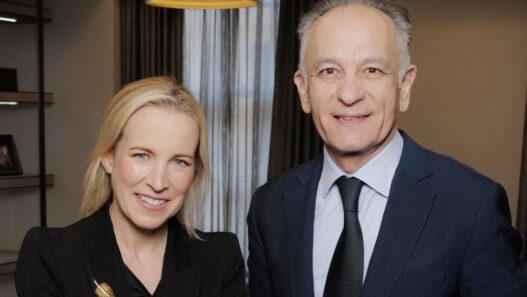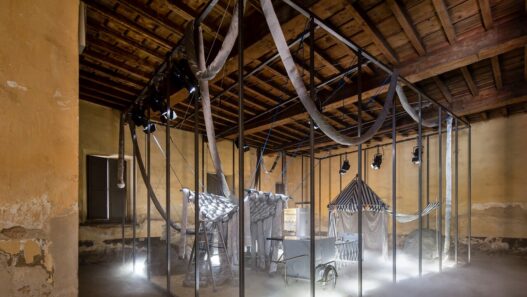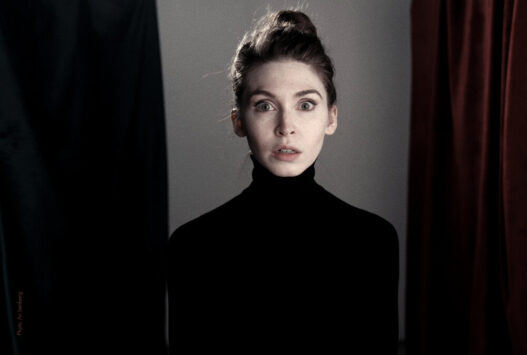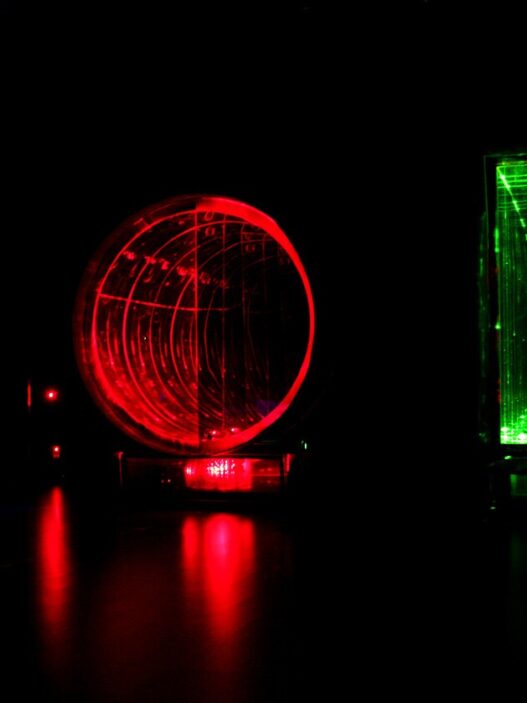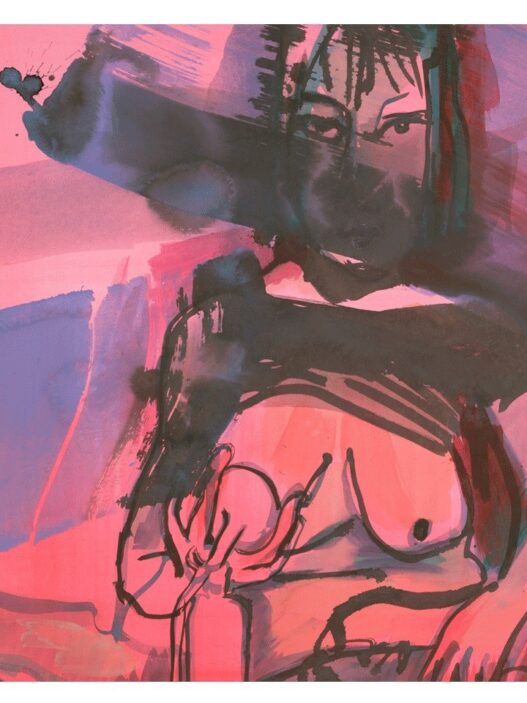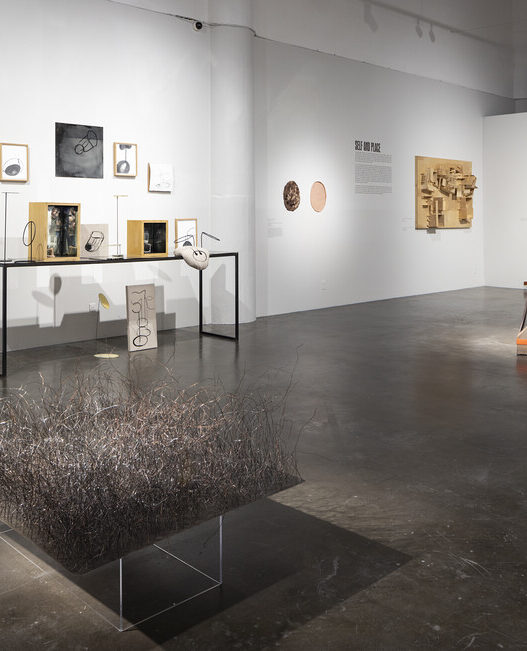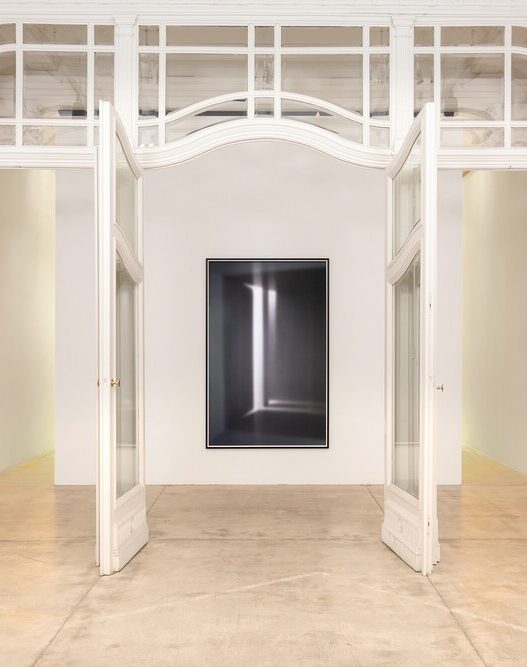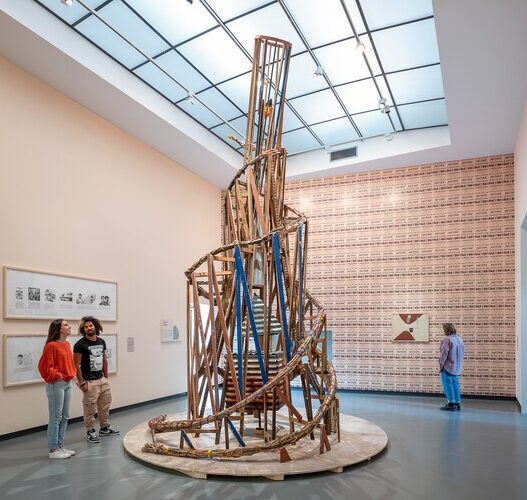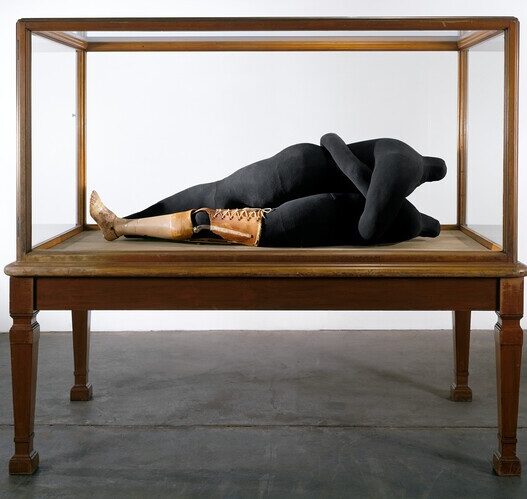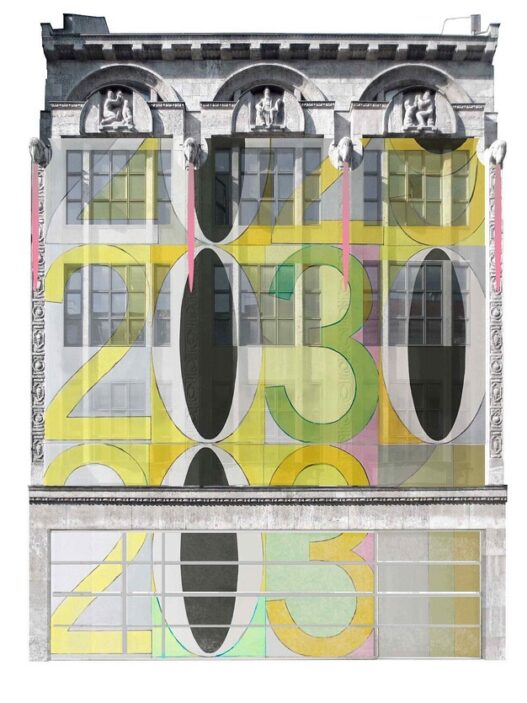July 28–31, 2022
This performance and installation project invites viewers to enter a thinking experiment—sort of a Turing Test—that examines the connections between magic, machine learning, and surprise. In Taken by Artificial Surprise, hierarchies of surprise and the generation of surprise by humans and computers are explored and contrasted using historical parlor magic. What might seemingly implausible performances reveal about the strengths and weaknesses of both machine learning and the human mind? The mechanisms that produce surprise are said to reside deeply within the gaps of lived and learnt personal and cultural experience, and Andrews asks participants to consider whether surprise is a special, distinguishing aspect of human consciousness.
The magic effects featured in this work’s performance feature several levels of surprise. The magic effects featured in this work’s performance feature several levels of surprise. Along with algorithmically created magic effects that she has come up with techniques to replicate in real life for viewers, Andrews also showcases historical examples of magic. Participants can be a little uncertain about which is which.
The ground-breaking study “Computing Machinery and Intelligence,” written by pioneering mathematician and computer scientist Alan Turing, was published in 1950. He created his own parlor-style entertainment, the imitation game, by drawing influence from Victorian parlor games. This served as the basis for the now-famous Turing Test, which looked into artificial intelligence by asking the question, “Can a machine take us by surprise?” An early technology glossy ideal is juxtaposed with imagery from Victorian parlor games in the piece. The piece, which consists of gigantic curtains made of vinyl, rubber, velvet, chiffon, and leatherette, fuses the language of the ordinary with the fantastical to draw attention to the ontological commitments that are frequently made about various materials. Text and illustrations from scientific investigations, philosophical publications, and Andrews’s notebooks are printed on some of the textiles. Numerous semi-transparent black acrylic boxes, which are also used in the performances, are filled with strange home items that are drawn from widely used nouns in ancient magic catalogs. A transparent TV in the adjacent gallery is showing a short film produced in association with cinematographer Ari Isenberg. It features Andrews speaking a screenplay created by OpenAI alongside images of vintage magic wands, and it was shot on a set inspired by the Cornell boxes that give CGI programmers inspiration.
Andrews also notes that “this project was inspired by my time as an Affiliate at metaLAB (at) Harvard. During this time I was fortunate to have encountered a diversity of ideas and research, and discourse with metaLAB members also greatly assisted the ideation process.”
An artist, magician, and researcher from New York City, Jeanette Andrews was born in 1990. Andrews’ work is primarily concerned with the creation of interactive magic and auditory and visual illusions. Her extensive training in parlor and sleight-of-hand magic over the course of more than 27 years has given her a unique viewpoint on creating encounters with complex, surreal imagery. Invisibility, impossibly large items, the connection between smell and magic, and the way illusions shape reality are just a few of the themes that have been explored. Andrews collaborates closely with galleries and museums to study magic as a performance art medium and to reframe magic within the context of the cultural arts. Her 2020 Invisible Museums of the Unseen, which was later commissioned as a site-specific work for the Quebec City Biennial, is just one of the many commissioned pieces she has displayed at the Museum of Contemporary Art Chicago. Additional site-specific pieces have been produced for a variety of museums, including the International Museum of Surgical Science, Birmingham Museum of Art, and Elmhurst Art Museum. She has completed residencies at The Institute for Art and Olfaction in Los Angeles and High Concept Labs in Chicago. She is a Harvard Affiliate of metaLAB. Andrews has dedicated her life to illusion, and publications including the Chicago Tribune, PBS, and the New York Times have complimented her performances.
This work is made possible by Franklin Furnace Archive, Inc. and the New York State Council on the Arts with the support of Governor Kathy Hochul and the New York State Legislature.
Culture Lab LIC
5-25 46th Avenue
Long Island City, New York, NY 11101
USA
T +1 347 848 0030
[email protected]
www.culturelablic.org
Instagram / Instagram


